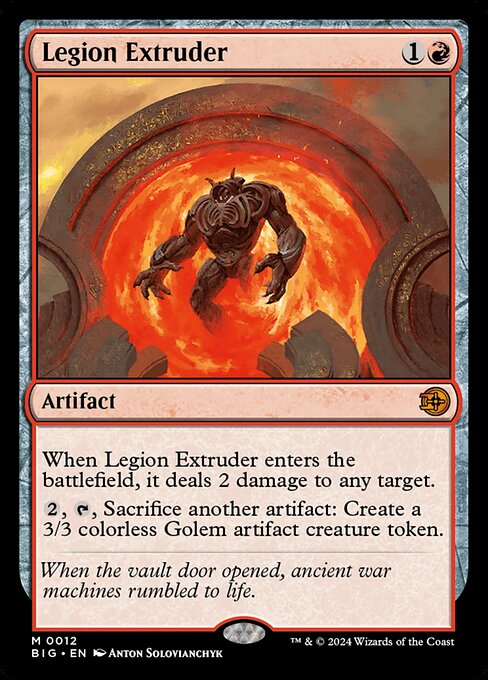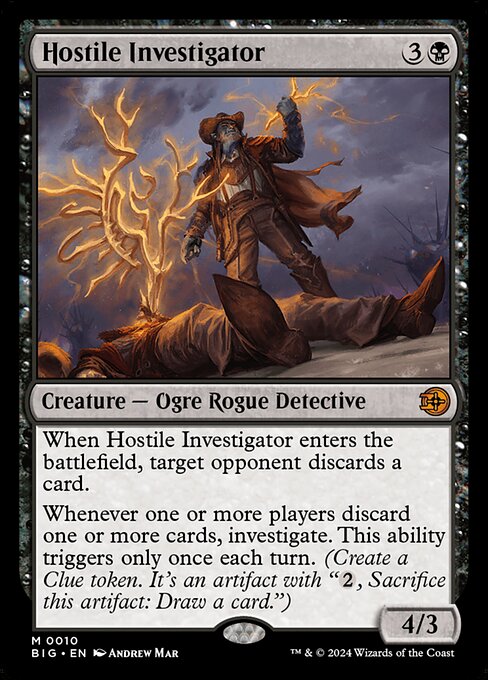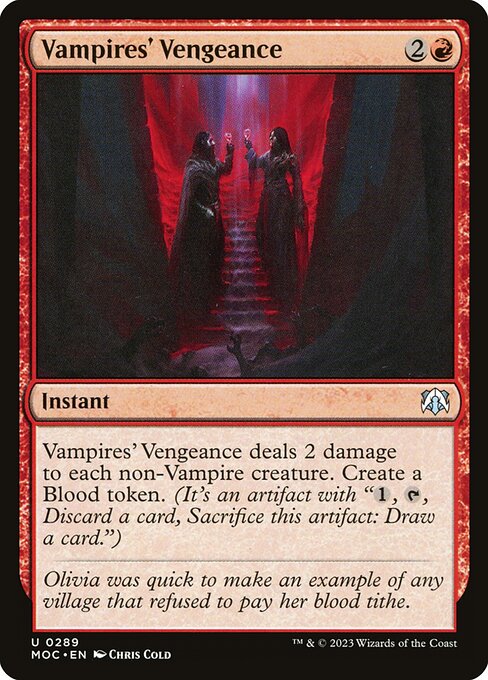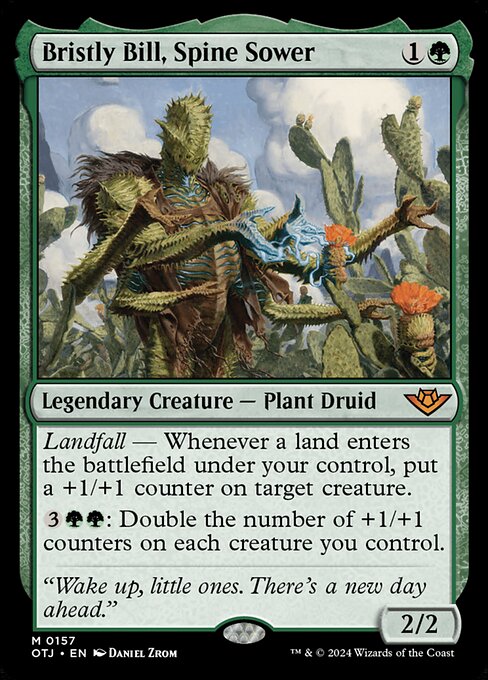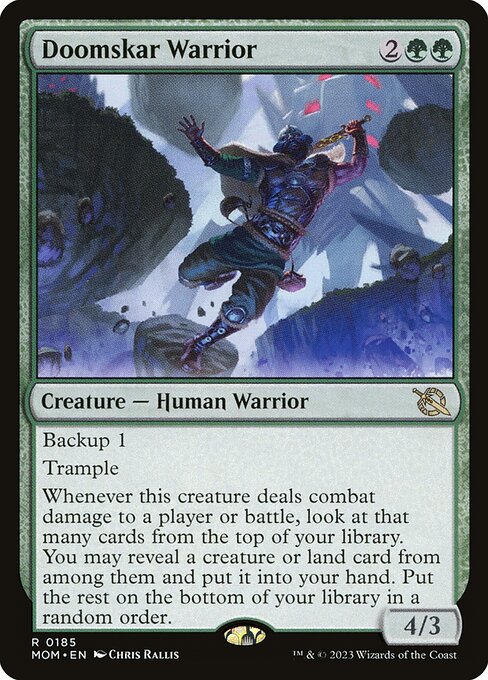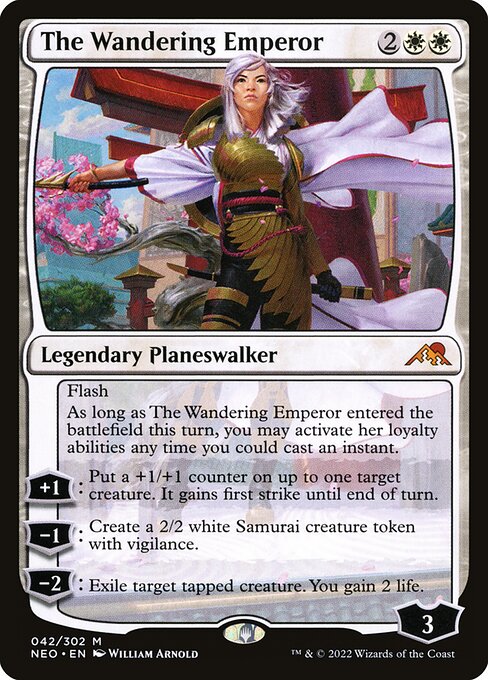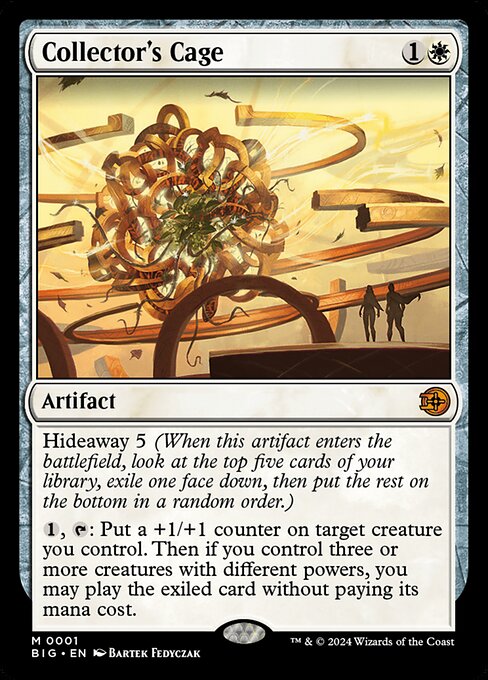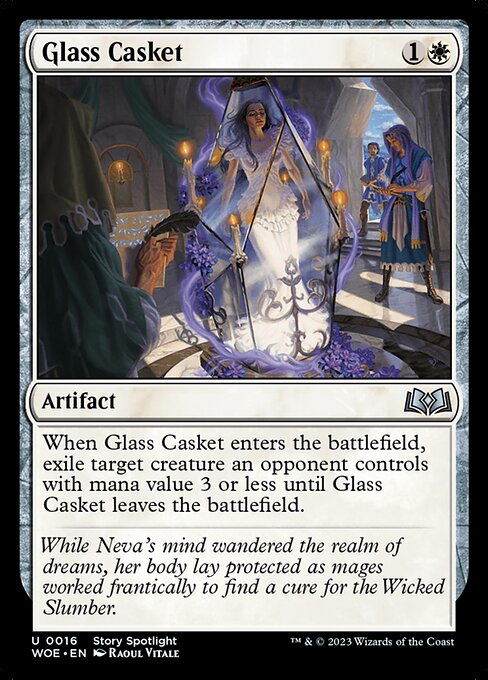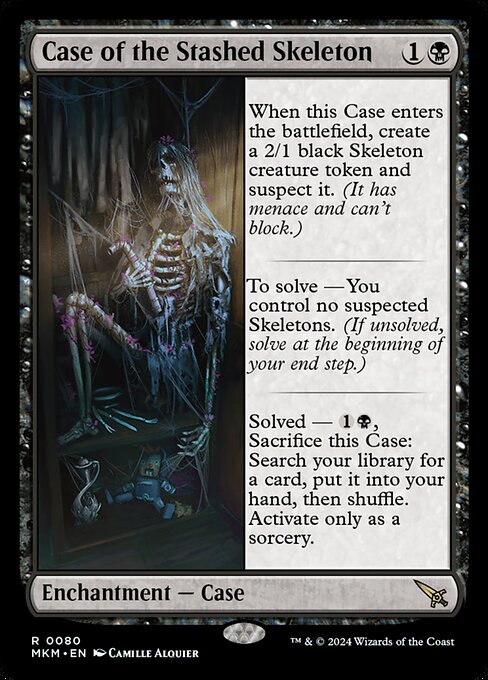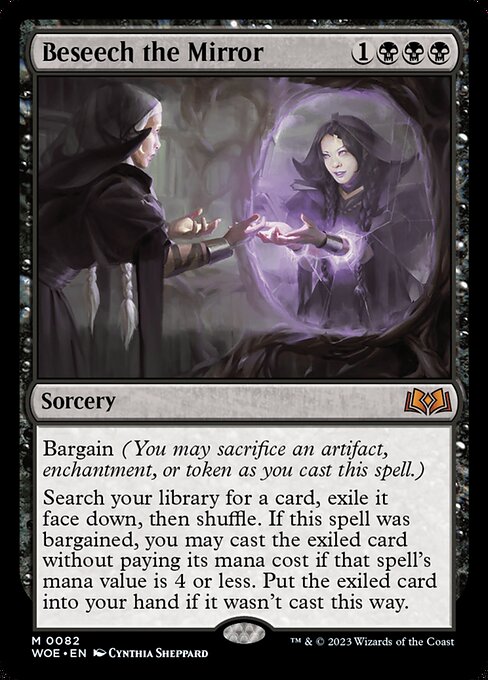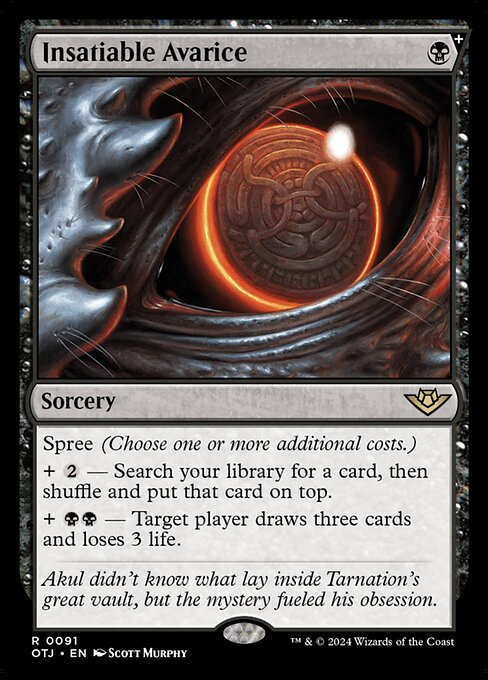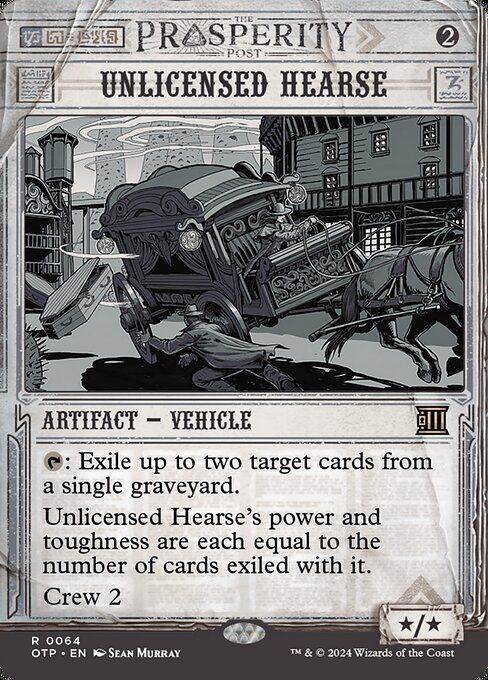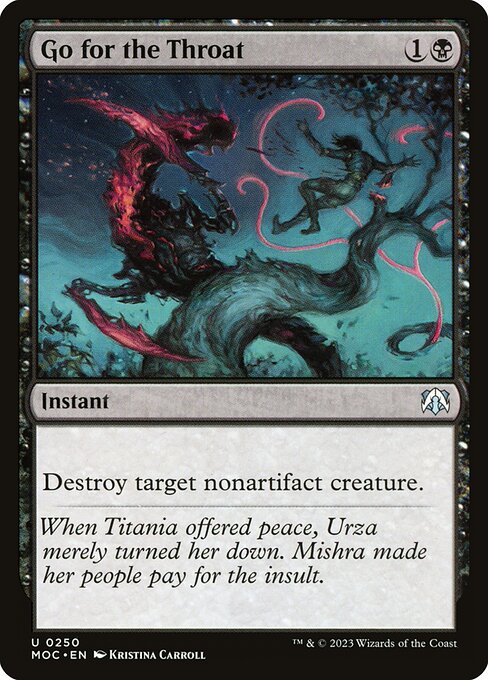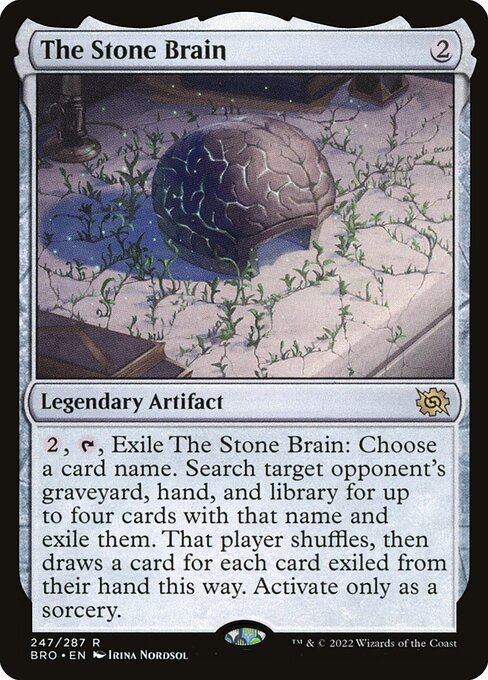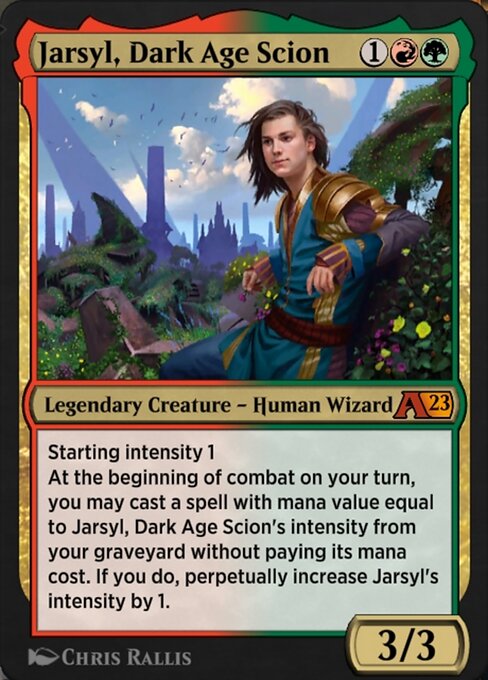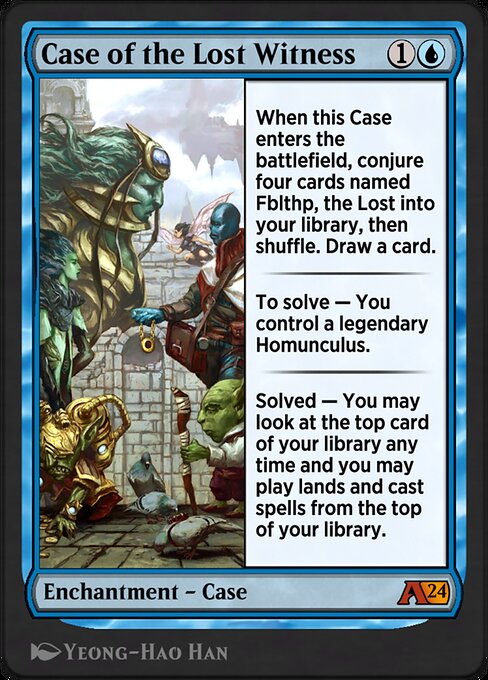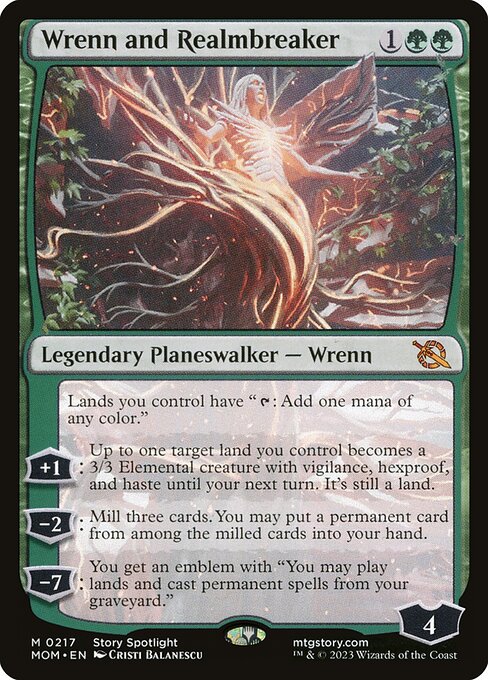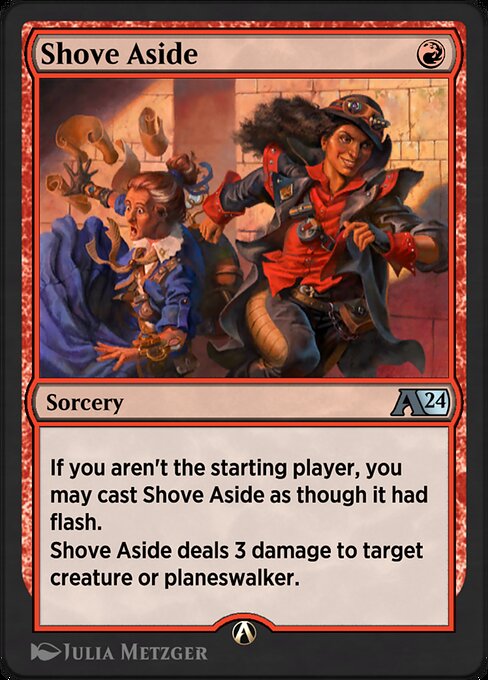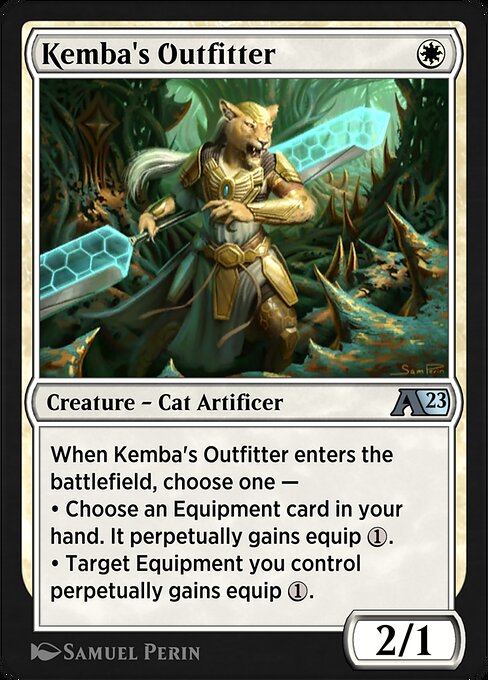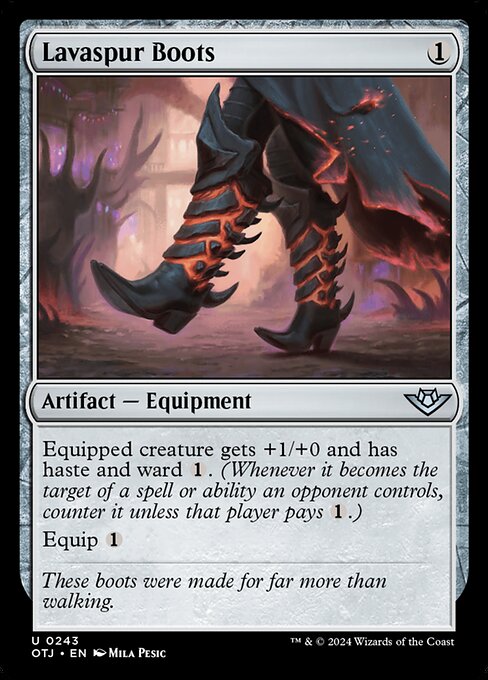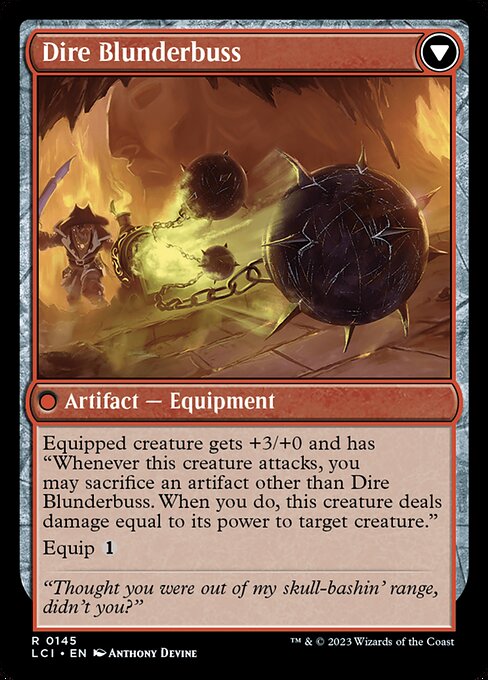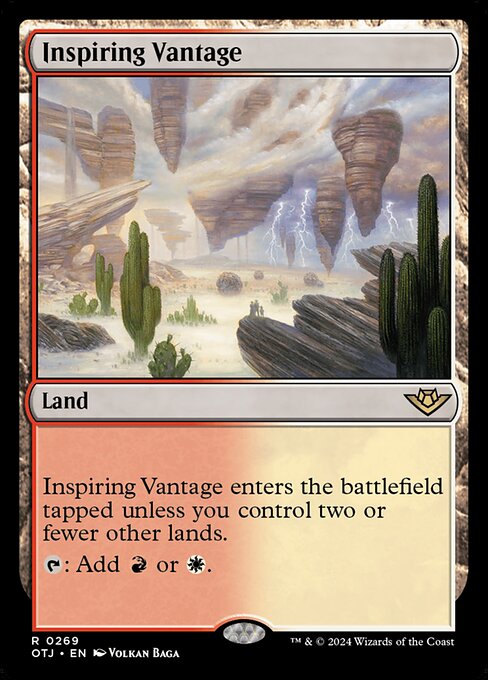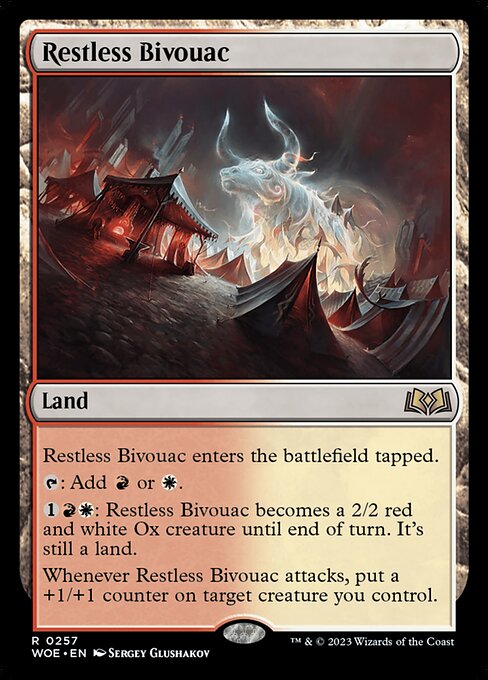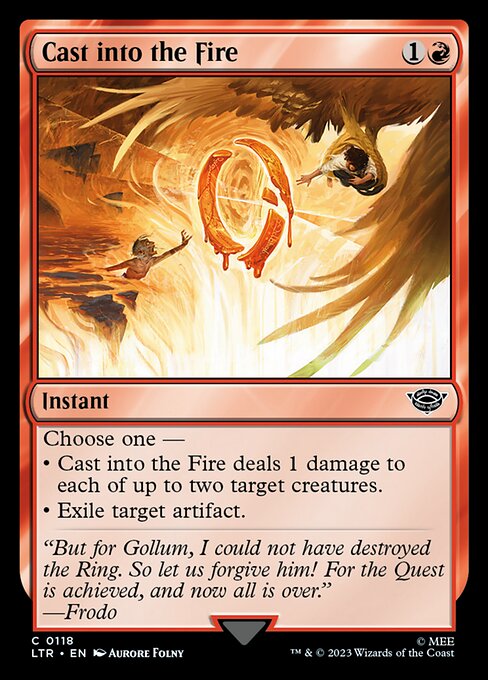Table of Contents
Hey all, Outlaws of Thunder Junction is upon us, releasing Tuesday April 16th on MTG Arena, and I can’t wait to dive into matches of Standard and Alchemy with the new cards. Presented here today are 5 decks I’ve brewed up across the two formats making use of cards from the new set, that should be fun and competitive. Let’s jump right into it.
Rakdos Legion Extruder (Standard)



Creatures (22)
Lands (24)
60 Cards
$158.52
Sideboard
15 Cards
$33.21
Legion Extruder is a powerful new card from The Big Score bonus sheet. Coming down for just two mana to take out an opponent’s early creature, finish off a planeswalker, or just go face for some chip damage, it then sticks around and turns all of our extra artifact tokens into 3/3 golems.
To provide a stream of artifact tokens to convert into 3/3s we are playing something resembling the old Oni-Cult Anvil decks that have existed previously. Our goal with this deck is to enable Legion Extruder without being too gimmicky, or rather we don’t just want to be making artifacts to sacrifice, we want to have a game plan that works even when we don’t have a Legion Extruder. Let’s go over the deck’s key cards and synergies.
Our first package is the blood token package. Voldaren Epicure and Bloodtithe Harvester both make blood tokens when they enter, and Bloodtithe Harvester is a good removal spell in the early game. Blood tokens also help us dig through our deck to find our payoffs or help find lands/get rid of extra lands.
Next, our treasures package includes Charming Scoundrel, which can make a treasure to convert into a 3/3 or ramp us, help us find action or lands, or pump up an attacker to push for lethal. New from Outlaws of Thunder Junction is Magda, the Hoardmaster. Whenever you commit a crime Magda, the Hoardmaster gives us a treasure (only once a turn) and we have lots of ways to commit crimes on both our turn and our opponent’s turn.
Cut Down and Go for the Throat are our main removal spells and crime committers, but Bloodtithe Harvester can commit a crime with its activation, Legion Extruder commits a crime with is enters the battlefield trigger, and the adventure side of Decadent Dragon, and Hostile Investigator also commit crimes (more on those cards below.) Magda, the Hoardmaster can also sacrifice our accumulated treasures to make 4/4 dragons, giving us another payoff for our artifact tokens.
At the top of our curve we have Decadent Dragon. The adventure side,
New from The Big Score bonus sheet, we have Hostile Investigator, which makes our opponent discard a card, committing a crime, and gives us a clue token, which can be used to give us a card or be converted into a 3/3. Notably, Hostile Investigator says “When one or more players discard one or more cards, Investigate.” So, if we activate our blood token and discard a card to draw a card with a Hostile Investigator in play, we will investigate.
Our Duress and Liliana of the Veil out of the sideboard will give us a clue when we have the Investigator in play, making it more than just an enters the battlefield trigger in this deck.
Rounding out the deck we have a couple of more artifact synergy cards to give us some back up payoffs when we don’t have a Legion Extruder around. Oni-Cult Anvil, in Standard for another few months, can turn our tokens into 1/1 constructs that can later be upgraded into 3/3 golems or be used to gum up the board and buy us time to get set up.
Oni-Cult Anvil also drains our opponent each time we use it, meaning we can often get in the last few points of damage using it. I wasn’t sure about including Oni-Cult Anvil at first, but I think it is worth trying in this kind of more value based grindy shell rather than an all out artifact sacrifice shell we’ve seen in the past.
Our other artifact sacrifice payoff is
The mana base is pretty straight forward, but worth noting is our copies of Mirrex can creature artifacts to convert into 1/1 constructs or 3/3 golems, and our creature land Restless Vents can discard a card to draw a card on attack, which will trigger our Hostile Investigator to create a clue.
Our sideboard is built to give us discard against control decks, graveyard hate against the Temur lands combo deck, extra removal against aggressive decks, and
G/W Counters (Standard)


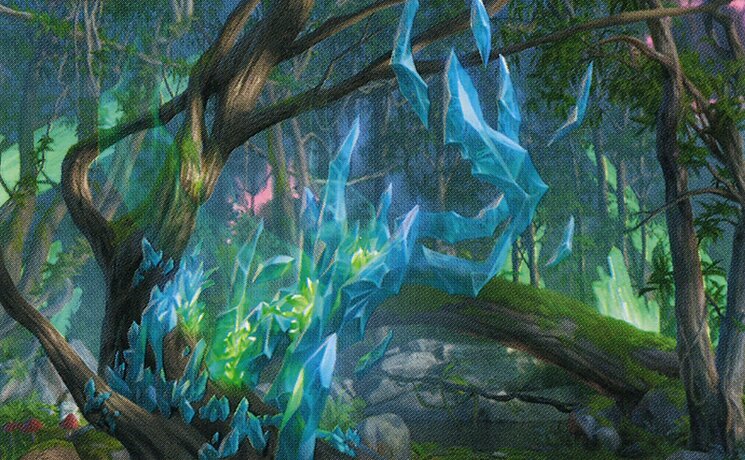
Planeswalkers (2)
Creatures (26)
Instants (2)
Sorceries (1)
Enchantments (2)
Lands (24)
60 Cards
$342.38
Sideboard
15 Cards
$30.29
This is an aggressive midrange deck looking to size up our creatures to force them past our opponents defenses. Almost all of our cards care about +1/+1 counters or give out +1/+1 counters giving us a lot of repetitive sources of counters to frustrate the opponents removal spells and keep our board growing.
While this archetype has existed for a while now and never quite been able to cross into a strong competitor, we have some new cards from Outlaws of Thunder Junction to try out that could just be what the deck needs to make it competitive. Let’s get into the key cards and gameplan.
First, the old mainstays of the archetype, starting with Dusk Legion Duelist which is the reason to be excited about +1/+1 counters in Standard. Vigilance makes it great on offense and defense, safe from The Wandering Emperor -2 ability, and it draws cards when we put +1/+1 counters on it, making it a must answer threat for the opponent that when unanswered gives us a steady stream of cards to help us keep up against other midrange and control decks.
Botanical Brawler grows whenever we put counters on our other creatures, making it easy for it to become a huge trample threat as the game goes on. Lastly, Hopeful Initiate gives us a one drop that can grow as the game goes on, but also gives us a way to answer opposing artifacts and enchantments later in the game.
We have tons of ways to give +1/+1 counters to our creatures, both old and new. New from Outlaws of Thunder Junction we have Bristly Bill, Spine Sower. While technically a 2-drop, it is best to play it on turn 3 and immediately play a land to trigger him before an opponent has a chance to remove them.
While Bill can target himself with the landfall trigger, it is usually going to be best to spread the counters to other creatures, as the opponent is going to want to be removing Bill anyways to stop the counters from flowing. Although if you think that your opponent has a Cut Down, it could be worth it to put the first counter on Bill to grow him out of Cut Down range while they are tapped out. Bill also has a nice ability for us to activate in the late game to grow our team even further.
At three mana we have two creatures that give out counters at the beginning of our combat step. New from OTJ, we have Ornery Tumblewagg, which gives out counters, and can be Saddled, a new mechanic from Outlaws of Thunder Junction that is quite similar to Crew, to double the counters on one of our creatures.
An old stay of the archetype, we also have Siege Veteran, which in addition to giving out counters can create tokens when any of our other Soldiers die, which only includes our Dusk Legion Duelists and other copies of Siege Veteran, so while it won’t trigger often it is a nice addition that will occasionally come up.
Similar to Bristly Bill, these two creatures are usually going to be best served giving their counters to other creatures, as they are going to be magnets for your opponents removal spells, but one counter early to grow them out of Cut Down or Play with Fire range is totally reasonable.
Our 4-drop slot has Standard main stay The Wandering Emperor, mostly used in this deck to distribute +1/+1 counters but can exile opposing threats and make 2/2s when the need arises, and Doomskar Warrior, which is a source of card advantage but also can give a counter and its text to one of our creatures when it enters the battlefield, making it a great curve out card that can help us find more action both the turn it comes in and as the game goes on.
While it normally doesn’t line up super great into a card like
Rounding out our ways to give counters we have Ozolith, the Shattered Spire, which acts like Hardened Scales to give us double the counters from all of our counter sources, and gives us something to do with our mana on turns when we have extra mana or later in the game.
New from The Big Score bonus sheet, we have one copy of
However, I’ve only included one copy because we really aren’t making much use of the Hideaway effect and with our copies of the Ozolith, we don’t want too many cards that don’t do much on their own. It could be possible that after playing some games we want more copies of this but I’m fine with just trying it as a one-of for now and seeing how it feels.
Lastly, we have Virtue of Loyalty, which is an instant speed threat at 2-mana, and a late game payoff to give counters to our whole team and untap them, making it a great card for closing out the game against other aggressive decks as our creatures will get to play offense and defense.
Rounding out the deck we have two copies of Get Lost to answer problematic creatures or planeswalkers from our opponent, and one copy of Requisition Raid, which can serve as main deck answers to artifacts and enchantments, but also give our team +1/+1 counters to trigger all of our synergies.
We are playing more copies of it in our sideboard to bring in against artifact and enchantment heavy decks, but I wanted to try one copy main since the +1/+1 counter mode is great in our deck even when the artifact and enchantment removal modes are useless.
The mana base is straight forward, although we do play 2 copies of Cabaretti Courtyard just as a way to get additional landfall triggers from Bristly Bill, Spine Sower.
The sideboard gives us new card Aven Interrupter to use against control and combo decks (you can see my article from last week to see all the uses of this card), Glass Casket is our answer to other aggressive decks, as we don’t really want to use a card like Temporary Lockdown as we play a lot of 2-drops ourselves, Unlicensed Hearse is to slow down the Temur land combo deck, Destroy Evil helps against
12-Tutor Bloodletter Combo (Standard)



Planeswalkers (1)
Creatures (4)
Sorceries (11)
Artifacts (1)
Enchantments (10)
Lands (26)
60 Cards
$344.06
Sideboard
15 Cards
$42.71
Alright, this deck is a bit out there, but I love the idea and wanted to give it a try. If you watched the Streamer Early Access event last week or seen other articles brewing for the set, you should be aware of the two card combo that is Bloodletter of Aclazotz and new card Rush of Dread.
Basically, Bloodletter of Aclazotz says if an opponent would lose life on your turn they lose twice that much life instead, and Rush of Dread has a mode that can have a target opponent lose half their life rounded up. Half their life, doubled, is their whole life total, and since Rush of Dread rounds up you won’t be leaving them at 1 life, they will be at zero every time.
So, there are lots of brews out there built around this combo, ranging from more aggressive to more controlling, but as it is a two card combo the games where you draw one and not the other can be a bit awkward. So I wanted to try to solve that problem by playing 12 ways to tutor that also lets us play a controlling toolbox deck. Let’s get into the key cards and gameplan.
Our deck has a whopping 12 ways to tutor for cards. New from Outlaws of Thunder Junction is Insatiable Avarice, which can be used at 3 mana to draw 3 cards or tutor a card to the top of our deck, or used at 5 mana to do both. Cards resolve from top to bottom, so due to the order of the two effects, if you choose both you will first tutor for a card to put on top and then draw 3, so you will draw the card you tutor for.
Case of the Stashed Skeleton is our second tutor, which when it enters the battlefield gives us a 2/1 suspected skeleton, and later can be activated for 2 mana to search up a card into our hand. To get to the tutor mode we need to get rid of that suspected skeleton. While it can sometimes get swept up by a sweeper or taken out by the opponent, our third tutor gives us the perfect way to get rid of it.
Beseech the Mirror is a 4 mana sorcery that tutors to our hand, but if it was bargained then we can cast the spell if it has mana value 4 or less. To bargain we have to sacrifice an artifact, enchantment, or token, like our skeleton token that we needed to get rid of anyway.
Beseech the Mirror is a great way to get our Bloodletter of Aclazotz into play or to cast Rush of Dread. When we get Rush of Dread this way we will still have to pay the additional costs for the modes we want to choose, so make sure you’ve got an extra 2 mana to cast the lose life mode.
We are playing a few other enchantments that get value when they enter the battlefield and then are perfect to sacrifice away to our Beseech the Mirror. Hopeless Nightmare and newcomer Tinybones Joins Up are both 1-mana enchantments that make our opponent discard a card when they enter and then have extra effects.
For our purposes, they don’t have many other uses, but we can sacrifice the Hopeless Nightmare if we have nothing else to do to scry 2, and our two legendary creatures can occasionally trigger the second clause on Tinybones Joins Up, causing our opponent to lose a life, mill a card, and most importantly it counts as committing a crime for our one copy of Kaervek, the Punisher.
The coolest part of this deck is that we get to play a variety of one-of cards that we can tutor for, making our game one matchups against a variety of decks a bit better. For example, we have:
- one Path of Peril to tutor for against Boros Convoke,
- one Unlicensed Hearse to tutor for against Temur land combo,
- The End to tutor for and use on an opposing Atraxa, Grand Unifier or any problematic creature,
- one Liliana of the Veil to grind away against control players,
- one Sheoldred, the Apocalypse to punish opponents trying to draw cards,
- and one Kaervek, the Punisher in games where we need to grind out our opponents by recasting cards from our graveyard whenever we commit a crime.
Rounding out our main deck are copies of Go for the Throat, Cut Down, and
In the mana base we have Caves of Koilos to help us cast the Cleave cost on Path of Peril in midrange matchups, Mirrex which can create tokens for us to bargain away to Beseech the Mirror, and Field of Ruin to answer opposing creature lands and copies of Mirrex, etc.
The sideboard is designed to help us combo against interactive decks, with Duress and Liliana of the Veil helping us strip their answers before we get our Bloodletter of Aclazotz into play, against Temur land combo we bring in more graveyard hate with the Unlicensed Hearse and Soul-Guide Lantern, and against aggressive decks we bring in our copies of Path of Peril and copies of Deadly Cover-Up so that we are less reliant on tutors to find them.
The Stone Brain is a nice tutor target to use against combo decks and ramp decks to strip them of their interaction or key combo pieces. Overall I’m not sure how this deck is going to play out, but I can’t wait to give it a try and adjust the one-of slots as I get used to the new meta.
Moving onto Alchemy, I’ve got two lists that I’m excited to try. The Alchemy meta is a mix of grindy Midrange/Control decks and aggressive Convoke decks right now, so you either need to be fast and efficient or grindy with answers to go wide creatures. I’ve got one deck for each of those strategies so let’s jump in.
Temur Loot Midrange (Alchemy)


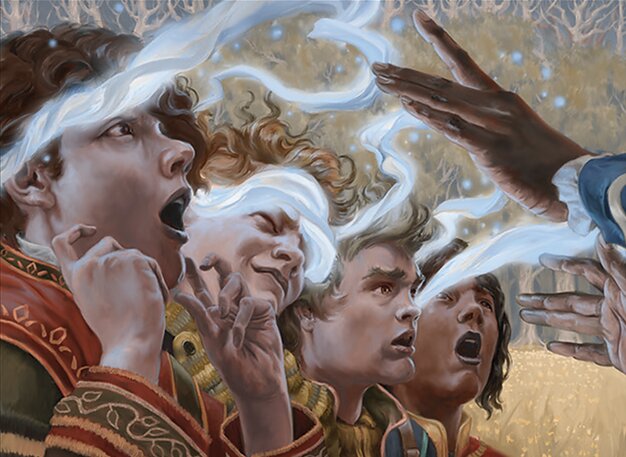
Planeswalkers (2)
Creatures (22)
Lands (22)
60 Cards
$178.03
Sideboard
15 Cards
$45.74
This is a grindy midrange deck built around new The Big Score card Loot, the Key to Everything. With a variety of permanent types and other grindy creatures this deck is looking to go toe-to-toe with the likes of Esper control and Mardu midrange that are popular in the meta right now. Let’s jump into the key cards and discuss the ways the deck can grind.
Delighted Halfling, the premier mana creature in Alchemy, allows us to cast our two 3-drop legends ahead of time. Loot, the Key to Everything exiles cards equal to the number of other nonland permanent types we have. To enable this we are playing several artifacts, enchantments, and planeswalkers that I will cover below. Loot is quite small and easy to remove, but the Ward 1 will occasionally matter, making opposing copies of
Our other 3-drop, Jarsyl, Dark Age Scion, is a value machine, recurring creatures and removal spells from our graveyard. The deck is built with plenty of one mana, two mana, and three mana cards to try to make sure that we are getting triggers out of Jarsyl every turn, and for some reason the cards don’t get exiled after Jarsyl recasts them, meaning that they stay in the graveyard for future Jarsyl’s to cast again after the opponent final removes the first copy.
The rest of the deck is built to support those two 3-drop legendary creatures. Haywire Mite counts as an artifact and a creature for Loot, and if we use it early to take out an opposing artifact or enchantment then it is a 1-drop that can be brought back with Jarsyl right away.
Case of the Lost Witness gives us an enchantment for Loot, but also replaces itself and shuffles copies of Fblthp, the Lost into our deck. When solved it lets us play cards from the top of our library, giving us another way to grind.
A Golden Opportunity is especially great with Loot’s trigger, as it is an enchantment that creates a creature that creates an artifact, giving us three permanent types in just one card. It also helps us ramp and gives us a couple cards and food as the game goes on, so it is fine even when we don’t have a Loot in play.
Questing Druid is a 2-drop on both its adventure half and creature half for the purpose of Jarsyl casting it from the graveyard, but also helps us dig deeper into our library to find our value engines and then grows into a real threat as the game goes on.
Wrenn and Realmbreaker are a planeswalker for the purposes of Loot’s trigger, but also give us a must answer threat that can either build up to an unbeatable ultimate in midrange mirrors, or fill up our graveyard for our Jarsyl to flashback.
Rounding out the deck we have removal in the form of Shove Aside, great in the early game and great as a one mana spell for Jarsyl to flashback, and newcomer Scorching Shot to take out bigger creatures like Sheoldred, the Apocalypse. While this deck does miss the more reliable removal that black has, we can still make do with these options.
We also have Tranquil Frillback for main deck graveyard hate, life gain, and artifact/enchantment destruction, and land cyclers in the form of Generous Ent and Lorien Revealed, which allow us to cheat on land count while being good spells for the games when we already have plenty of land drops.
The mana base is a bit all over the place, and I suspect after playing a few matches I will consolidate from one-of and two-of copies to more three-of and four-of copies of the lands that feel the best, but as we are getting enemy color fastlands in Outlaws of Thunder Junction, I want to find the right mix of fastlands, painlands, creature lands, and surveil lands.
Of note, our land cyclers can find surveil lands so keep that in mind if you have time to play a tapped land it might be better to cycle for a surveil land rather than a basic.
The sideboard gives us more graveyard hate for the various Insidious Roots decks and Push // Pull decks, with Soul-Guide Lantern, Stone of Erech, and more copies of Tranquil Frillback,
I think this deck has what it takes to grind against the format, so I can’t wait to try some matches and tweak the deck as I get a feel for it.
Boros Equipment (Alchemy)



Creatures (16)
Instants (4)
Artifacts (18)
Lands (22)
60 Cards
$86.56
Sideboard
15 Cards
$34.21
This is another deck, like the G/W Counters deck above, that has had the pieces for a long time but has never quite been able to break out. However, there are a couple new cards coming from Outlaws of Thunder Junction that I think can help the deck compete against the grindy midrange decks of the format.
The goal of this deck is to play equipment and smash our opponent with our beefed up creatures. We are playing a lot of equipment synergy cards so lets break down the key cards and game plan.
Let’s go over our creatures first.
Jor Kadeen, First Goldwarden is our main payoff, growing in size and drawing cards as long as we have him or other creatures equipped up.
Nahiri, Forged in Fury gets cheaper for each equipment we have in play, and gives us a nice source of card advantage to keep the pressure on after we have dumped our hand into play.
Kellan, the Fae-Blooded can tutor for an equipment and buff up our team when he is the one wearing them, and Kemba, Kha Enduring and Frodo, Determined Hero both snap on equipment when they come into play and Kemba can provide a nice mana sink as the game goes on.
So, what are we putting on our creatures before sending them off to battle? New from Outlaws of Thunder Junction is Lavaspur Boots, which is honestly the reason why I think this deck has a shot. Giving +1/+0, haste, and ward 1 with an equip cost of only 1 means that any creature we draw can be given haste and attack in.
Part of the problem that this deck has had in the past as that the pay-off creatures like Jor Kadeen, First Goldwarden or Nahiri, Forged in Fury require you to be attacking to get value, but without haste your opponent gets the chance to untap and remove them before they can get going. Lavaspur Boots fixes that problem for cheap, letting our Jor Kadeen attack and draw a card the turn we play him, or our Nahiri to get in and exile cards right away.
Our other equipment fall into the categories of being cheap and efficient or having the For Mirrodin! mechanic meaning they come along with a 2/2 rebel that attaches the equipment to itself. Bladehold War-Whip gives us a discount on all of our other equip costs and double strike is no joke when you have an equipped creature with large power.
Bladehold Cleaver gives us a nice grindy aspect to the deck, as whenever the equipped creature dies we get to draft a card from its spellbook and usually that gives us another threat to put into play.
Hexgold Sledge is our last For Mirrodin! equipment, which while it isn’t much by itself, also gives us a Goblin Gaveleer into play, meaning that we are getting 3 permanents for 3 mana, and Goblin Gaveleer is great at wearing equipment and closing out the game.
Dire Flail is a nice cheap equipment that gives a nice buff on power, great for getting our Jor Kadeen, First Goldwarden up to four power, or giving a double strike creature extra punch.
One copy of Anduril, Flame of the West helps us go wide, giving us more bodies to equip all of our weapons to if our primary threats are removed, and new The Big Score card Lost Jitte can come down early, buff up the equipped creature or make a key opposing creature unable to block on turns we want to push through damage.
Rounding out the deck is four copies of Rebel Salvo, which should almost always cost one mana in this deck and helps us answer problematic creatures like Rusko, Clockmaker or Sheoldred, the Apocalypse.
Inspiring Vantage, newly reprinted in Outlaws of Thunder Junction, is another reason to give this deck a shot as its mana just improved a whole lot. All of the enemy color aggressive decks just got a whole lot better thanks to these lands finally being reprinted into Standard and Alchemy.
While playing four copies of Restless Bivouac can seem like a lot for an aggressive deck, we really only have one 1-drop, so most games we are going to have no issue playing a tap land on turn one. If it starts to feel awkward we can trim a couple copies.
The sideboard gives us answers to enchantments and big creatures with Destroy Evil, artifacts and small creatures with Cast into the Fire, one Stone of Erech against graveyard decks,
Wrapping Up
Whew, that was a lot to go through, but I can’t wait to give all of these decks a try on the ladder over the next couple days. New set releases are always my favorite time to play Magic, because brewing is my favorite part of Magic.
Trying new cards, reviving old decks, finding new synergies, etc are what makes the game fun for me, so I hope that my love of brewing can lead to some fun and interesting games for any of you who try out one of the decks I’ve covered today.
Regardless, I hope you enjoy the new cards and as always best of luck in your matches!
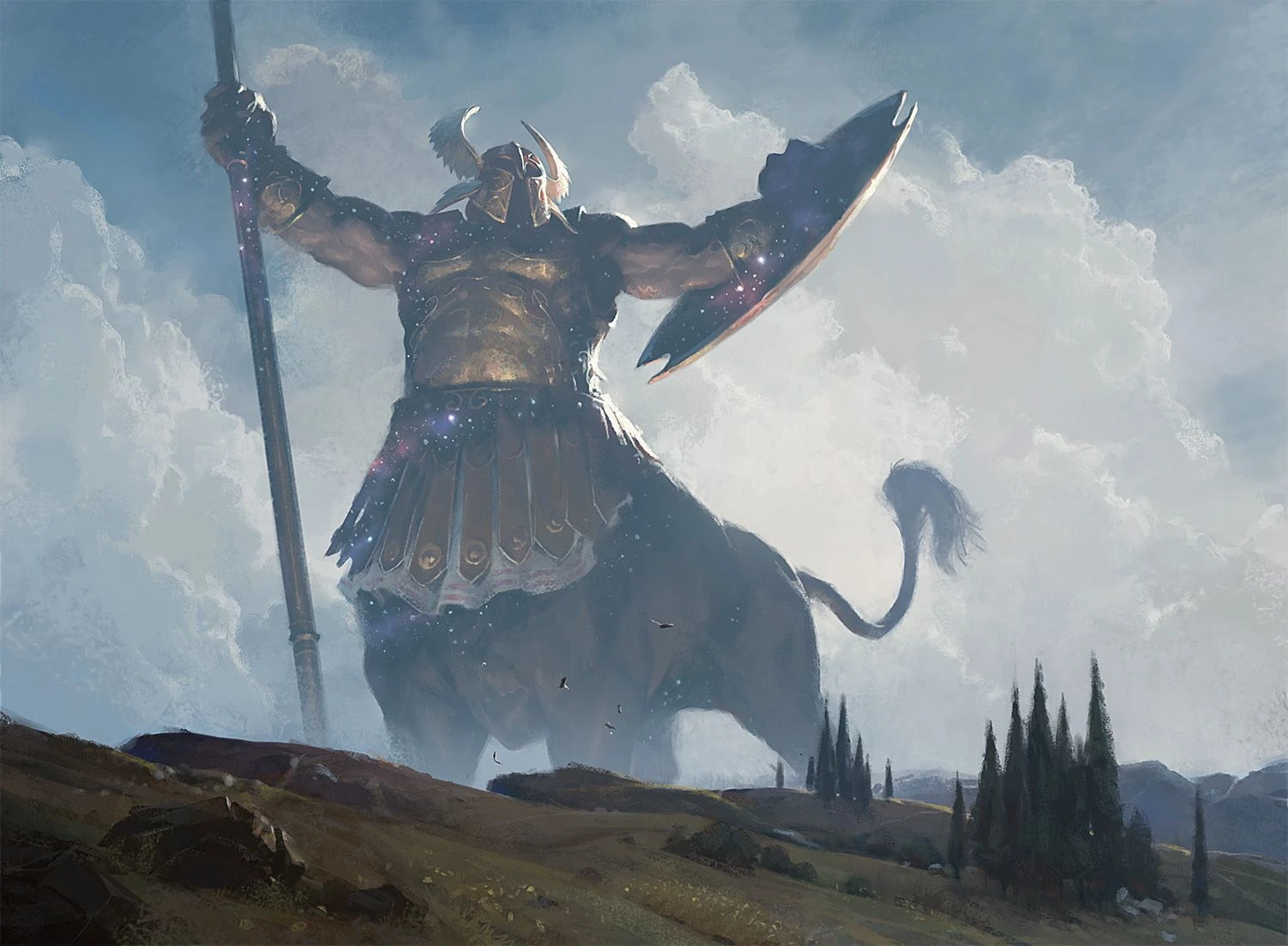
Premium
Enjoy our content? Wish to support our work? Join our Premium community, get access to exclusive content, remove all advertisements, and more!
- No ads: Browse the entire website ad-free, both display and video.
- Exclusive Content: Instant access to all exclusive articles only for Premium members, at your fingertips.
- Support: All your contributions get directly reinvested into the website to increase your viewing experience!
- Discord: Join our Discord server, claim your Premium role and gain access to exclusive channels where you can learn in real time!
- Special offer: For a limited time, use coupon code L95WR9JOWV to get 50% off the Annual plan!


























